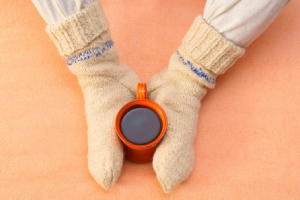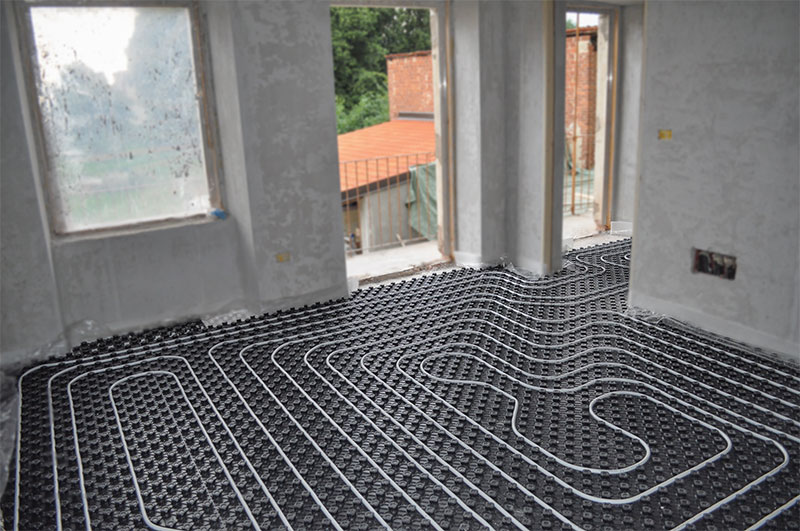Forced air heating systems have dominated the market for a long time, but this has changed in the last few years, as more and more homeowners are shifting away from traditional heating systems.
Let’s take a look at some of the industry heating trends with radiant floor heating.
By the Numbers
Before we get into the heating trends, here’s some growth information you need to know.
There is an anticipated Compound Annual Growth Rate (CAGR) of 6.4 percent from 2023 to 2030 for the radiant floor heating industry.
In 2022, the global underfloor heating market reached an estimated 4.51 billion USD. Of this 4.51 billion, 48.3 percent came from the residential sector, accompanied by a 6 percent increase in construction between 2021 and 2022.
Despite the growth within the residential market, the commercial market is expected to have the fastest Compound Annual Growth Rate (CARG) and is promising to reduce energy consumption and improve air quality.
8 Heating Trends and Innovations In Radiant Heating

1. Recognizing the Power of Smart Thermostats
Most people don’t give their thermostats much thought, which is a big mistake.
The advanced technology in smart thermostats has transformed the radiant flooring market. By using smart thermostats, homeowners can customize their heat settings and have remote access and zoning capabilities that help them create improved home efficiency and increase savings.
2. Electric vs. Hydronic Radiant Heating
Of the two available types of systems—electric and hydronic—hydronic systems lead the market in 2022.
However, electric systems are expected to experience the fastest growth from the 2023 to 2030 period. The reason?
Because they are easier to install and more affordable.
They are also better suited for renovation projects than hydronic systems. Regardless, both systems offer efficiency and reliability and can help property owners save hundreds in utilities — especially when paired with a smart thermostat.
3. A Shift Towards Energy Efficiency
The shift towards consumers being more conscientious of their energy consumption habits has them seeking energy-efficient solutions in all sectors, including heating.
Radiant flooring is an inherently energy-efficient option that heats from the ground up and also heats objects rather than air, which reduces heat loss. Efficiency increases when, again, it is paired with a smart or programmable thermostat, which allows homeowners to set schedules and zones and helps track usage and energy consumption.
4. Focusing on More Than Comfort
Radiant heating is a great source of comfort during cold winter months, but it offers more than that – it can help improve health. Radiant heating systems eliminate the need for air ducts, which reduces the amount of dust and allergens circulating in the air. It leads to a healthier environment and improves the conditions for anyone with respiratory issues.
5. Home Automation Integration
Home automation controls are becoming more prevalent each year. Radiant heating systems do not incorporate this technology, which makes them compatible with many major home automation devices. Automation helps ensure that you can always access your system remotely and adjust the temperature or schedule. With your smart assistant, you can also use voice controls to control the system.
6. Sustainable Materials
The radiant heat flooring industry strives to be sustainable.
In fact, many manufacturers use recycled materials to create electrical heating cables and mats, which helps to reduce their impact on the environment. They also implement installation techniques that help minimize the amount of waste produced and energy consumed, which also lends itself to making radiant heating products more sustainable.
7. Hydronic Systems for Whole House Heating
The popularity of hydronic heating systems over the last few years is due to their efficiency and ability to be powered by various energy sources.
And despite the higher initial installation costs, hydronic systems are often preferred for whole-house heating — especially in new construction.
8. Spot Heating
Radiant heating does not have to be installed throughout the entire space. Another emerging heating trend is the idea of “spot heating,” which involves installing radiant heating in smaller areas, such as bathrooms or other high-traffic areas.
Because it cuts down on installation and operational costs, it is a great way to add radiant heating without compromising the overall effectiveness of the system. One of the best ways to do this is by using heating mats.
The Future of Heating

The world is constantly changing, and issues like climate change have made it clear to many people that they must also change.
It has also caused many home and commercial property owners to look for more sustainable, energy-efficient swaps that lessen their environmental impact without sacrificing quality and service. Radiant heating is one protection that can help achieve this goal while providing an effective heat source.
Some heating trends and innovations are coming about, but more will follow in the years as the radiant heating market continues its rapid growth.
Get in touch with us today to discover more about our radiant floor heating products, and be sure to follow our blog to keep up with the latest industry trends and innovations.





![Thumbnail [200x250]](/wp-content/uploads/Indoor-Systems-Page-Image.png)
![Thumbnail [200x250]](/wp-content/uploads/image-13.png)
![Thumbnail [200x250]](/wp-content/uploads/Projects-Image.png)